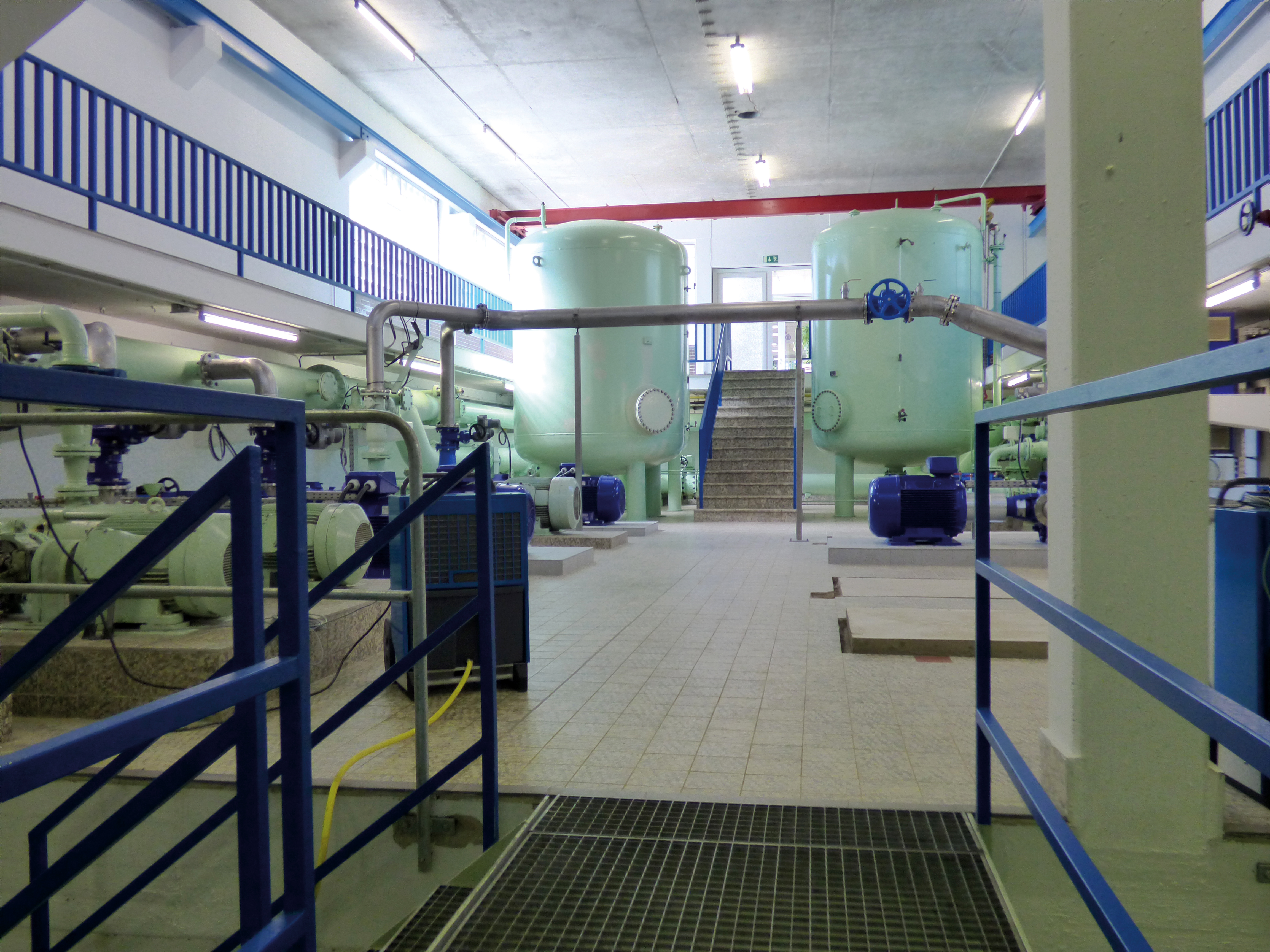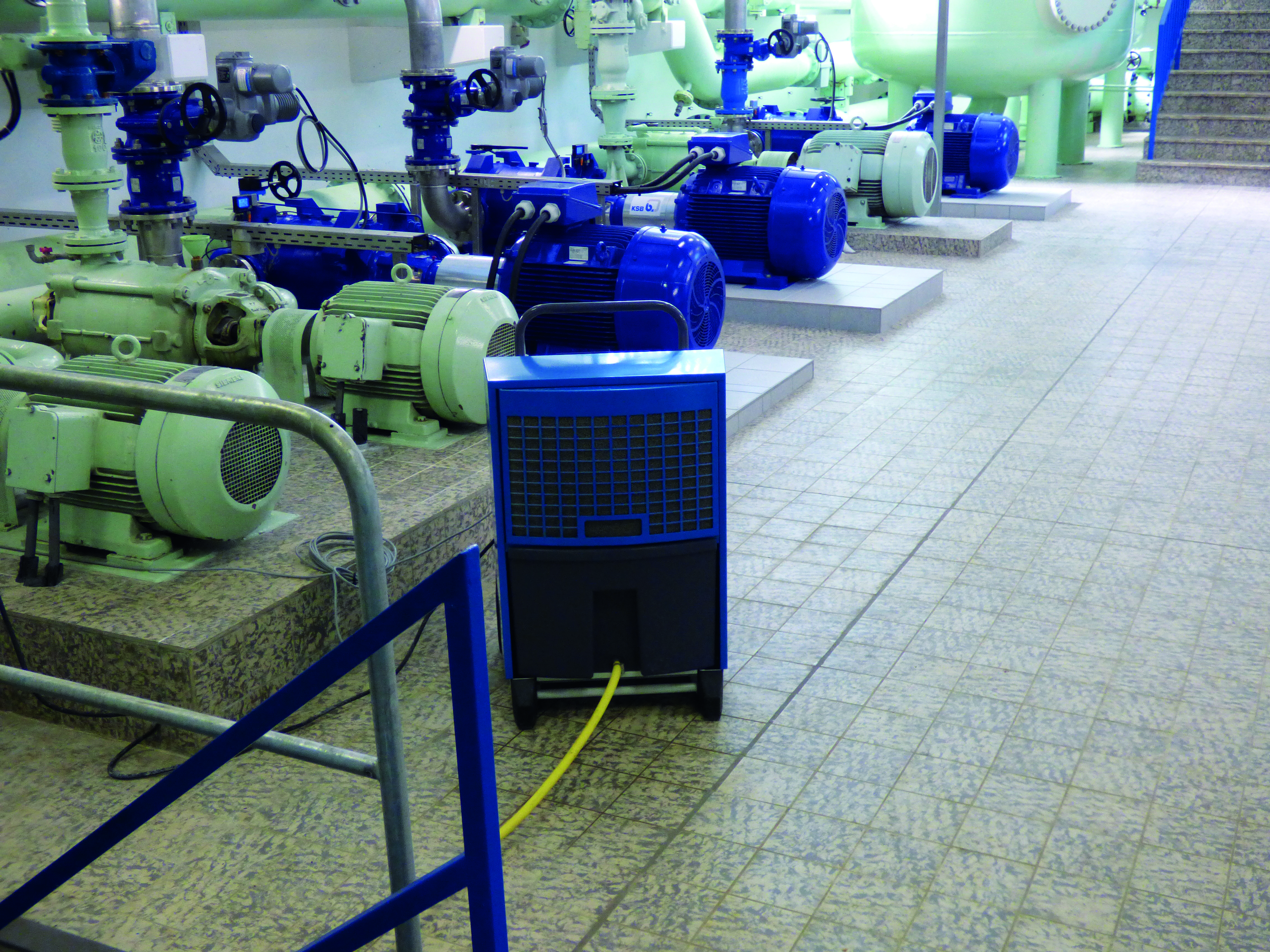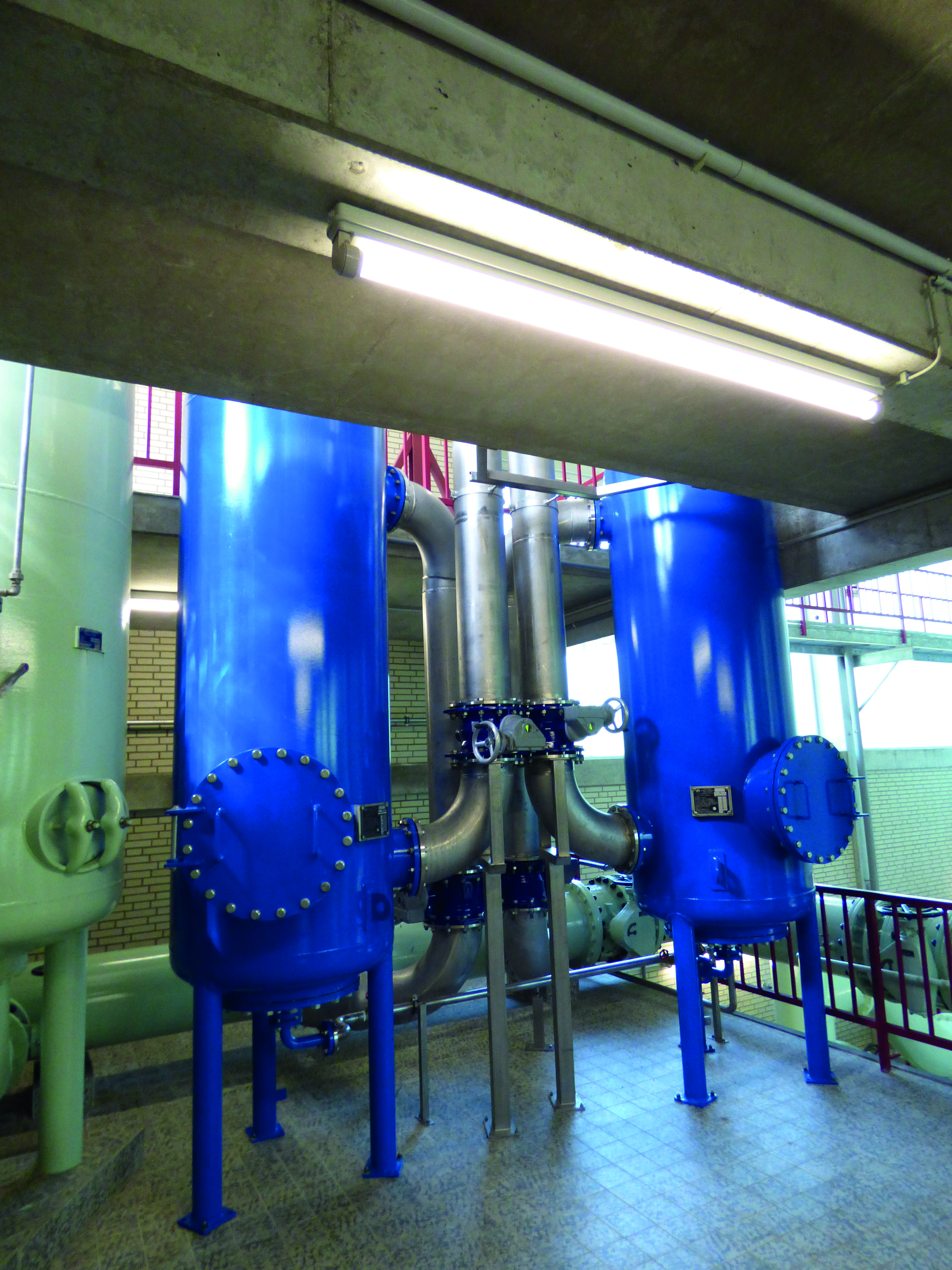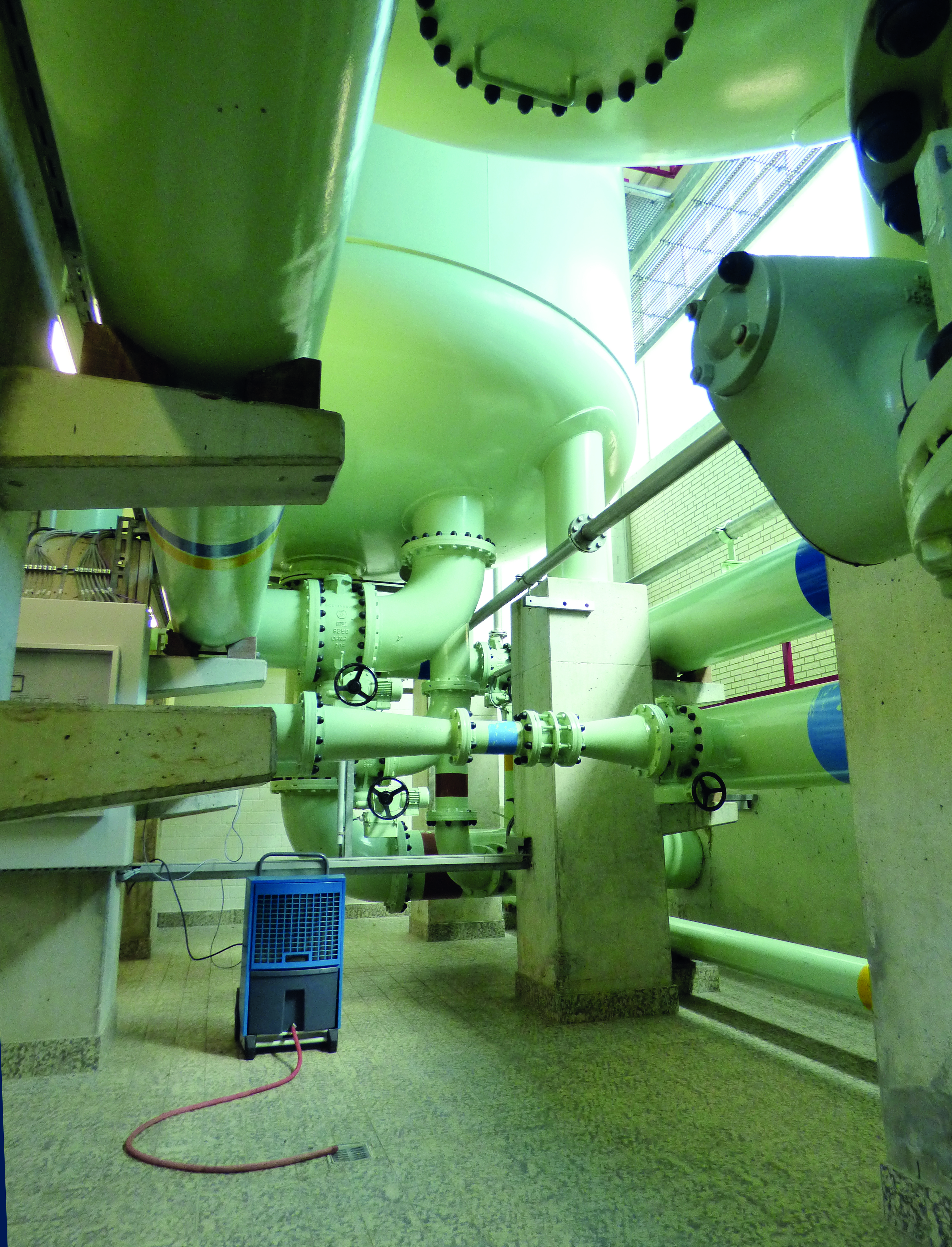The water procurement association Osnabrück Süd (WbV-Os-Süd) operates a total of 24 wells and five waterworks in Glandorf, Alt-Georgsmarienhütte, Hilter, Oesede and Hagen. The association delivers around 4.9 million m3 of drinking water to the eleven member communities and cities via a transport network of around 160 km of pipes and 22 elevated tanks and pumping stations. In the Glandorf water treatment facility, an oxygen carrier and four filters through which the water is passed are used for treatment. The consistently high water quality is ensured by daily controls.
Quick facts
- No condensation
- No mold and mildew growth
- Reduced maintenance costs
- Improved hygienic environment
- Protection of electronic equipment
Classic waterworks problems
Condensation on cold surfaces causes corrosion and is a general issue on water works. The condensation occurs on all cold surfaces such as pipes and filters since the air around the cold surfaces cannot contain as much water as the warmer ambient air. If the formation of condensation is not stopped corrosions will arise immediately. At a relative humidity below 50% RH the corrosion process stops, whereas the corrosion rate is growing vigorously at humidities above 60% RH. The condensation formation on cold pipes and cold surfaces in general, increases the requirement for regular maintenance such as painting and cleaning, and makes it difficult to comply with the required hygiene standards on water works. Humidity levels beyond 70% RH also allows for mildew, mold and fungal and bacterial growth. Waterworks should be kept free of microbial growth, as the facilities are considered as food supplying companies, and thus controlled by the Food Safety Authorities. Also the electronic equipment used for control and monitoring of waterworks is sensitive to high humidity, and the high humidity can cause damage to the building structures themselves.
Dehumidification is the solution
The water temperature at the Glandorf facility is about 8°C as it enters the pipes and as the indoor temperature is always higher (min. 13°C), the moisture in the air precipitates as condensation on the cold pipes and filters. The classical problems that arise in waterworks, was also known in the Glandorf facility, namely algae growth on steel surfaces, mold on building structures and wet pipes with corrosion where the paint peels off. Facility Manager Frank Kurowski has already for many years prevented these problems by using dehumidifiers from Munters. Munters dehumidifiers type MK are mobile refrigerant units and a number of dehumidifiers are permanently in use in the halls with oxidizer and filters. In addition, a few extra dehumidifiers are at hand for use during peak periods (e.g. on some summer days when the water content in the air is extraordinary high), and for quick drying after cleaning. Energy saving controls The dehumidifiers are controlled via a Microstate humidistat, a humidity sensor located directly on the surface of the cold pipe. By measuring the dewpoint directly on the pipes the dehumidifiers are able to keep the humidity in the water treatment facility below this dewpoint, whereby condensation is completely prevented. At the same time this type of controlling by means of a "floating dew point" secures that the dehumidifiers are operating less hours compared to the more traditional control by the air's relative humidity. This saves expensive energy. Mr. Kurowski appreciates with great satisfaction the condensation-free environment, low cost of maintenance of buildings and pipes and not at least the mold and corrosion free conditions. An absolute necessity at a waterworks all subject to strict regulations of the Food Authorities.
Quick facts
- No condensation
- No mold and mildew growth
- Reduced maintenance costs
- Improved hygienic environment
- Protection of electronic equipment




